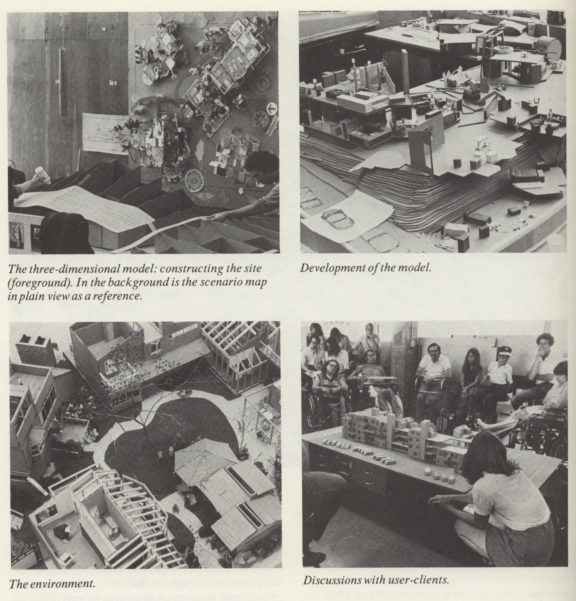The ARCH101 design studio encouraged students of architecture to imagine people with physical disabilities as having full, intricate, complicated lives. As part of its independent living philosophy, the course also invited disabled people into the studio as design consultants. These consultants helped architecture students visualize everyday rituals for their imaginary disabled personas in a process called scenario mapping. During this phase, students created a two-dimensional collage representing both static objects and a their imaginary client’s actions using colors, shapes, diagrams, and words. These collages exposed their imaginary client’s values, preferences, and feelings towards their environment, in addition to physical attributes, such as light, wind, temperature. Students followed scenario mapping with construction of a large scale 3-dimensional model.
